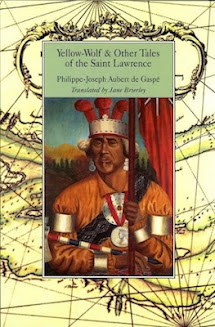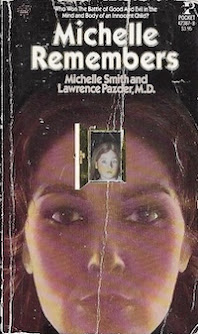With five days left in 2024, there's little chance I'll read and review another neglected book before the calendar turns... and so, the summary!
This was an unusual year for the Dusty Bookcase in that nearly half the books covered – twelve of the twenty-five – were published over a century ago. I don't know that I've reached half that number in the past. This years titles span 173 years, from Major John Richardson's Hardscrabble; Or, The Fall of Chicago (1850) to Richardson biographer David Richard Beasley's Canadian Authors You Should Know (2023). The former is the earliest paperback in my collection; Mark Breslin's Son of a Meech: The Best Brian Mulroney Jokes (1991), also read this year, is the ugliest in both appearance and content.
The best-looking book I've read in the past twelve months is the 1875 Lee & Sheppard edition of The Lily and the Cross by James De Mille. Coincidentally, De Mille's A Strange Manuscript Found in a Copper Cylinder was the most beautiful read last year.
To tweak the early Chapters slogan, great looks are just the beginning. The Dusty Bookcase has always been more about content than appearance. I write this, despite the near certainty that the jackets for this year's list of the three books most deserving of reissue were illustrated by the author herself:
The first of the Nova Scotian's books to be set in Ontario, this one concerns four women brought together by the imminent death of their father, once a successful rumrunner. It's about them, not him.
This was the very best novel I read this year. The titular character is the focal point, though her story is told through her daughter Rose. An servant in London, in Canada Miranda tweaks her past and takes on airs, while Rose grows to see through it all.
Her fifth in ten years, this is the author's final novel. Though Hillard lived a further three decades, she wrote only three more books; all were non-fiction, all were published in the 'sixties.
Sadly, of all the books covered, only one is in print today:
 |
I was tempted to include The Missing Chums (1928), the fourth Hardy Boys book penned by Ontario boy Leslie McFarlane, but that would've been cheating. The edition being flogged today was rewritten in 1962 by James Buechler. As I understand, all that's left of the original is the title.
This year, I was involved in the publication of only one book, the Ricochet rerelease of Sugar-Puss on Dorchester Street with new cover and revised introduction by Will Straw.
Next year will see a Ricochet reissue of a 1952 Canadian pulp novel that was deemed to spicy for the American market.
I'll say no more.
Bonne année!
Related posts:
The Very Best Reads of 2022: Ladies First
The Very Best Reads of the Second Plague Year (2021)
The Very Best Reads of a Plague Year (2020)
The Very Best Reads of a Very Strange Year (2019)
Best Books of 2018 (none of which are from 2018)
The Year's Best Books in Review - A.D. 2017
The Year's Best Books in Review - A.D. 2016
The Year's Best Books in Review - A.D. 2015
The Christmas Offering of Books - 1914 and 2014
A Last Minute Gift Slogan, "Give Books" (2013)
Grumbles About Gumble & Praise for Stark House (2012)
The Highest Compliments of the Season (2011)
A 75-Year-Old Virgin and Others I Acquired (2010)
Books are Best (2009)














































